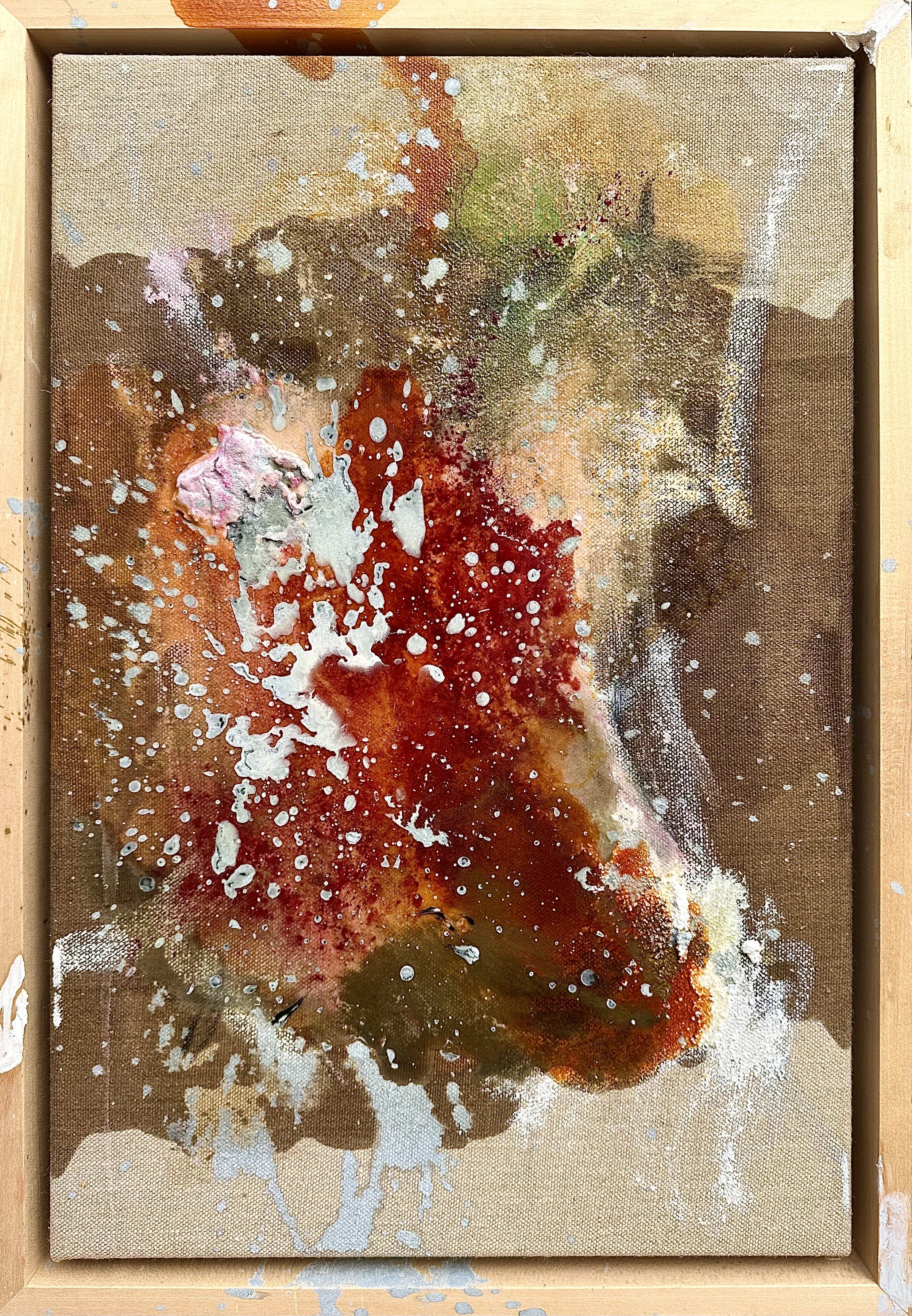Anna van den Hoevel
Anna van den Hoevel
A Conversation with Anna van den Hoevel
Text by Kate Hoag
Anna van den Hoevel, courtesy of the artist.
Anna van den Hoevel sees the world from above, but her paintings dig deep beneath the surface of emotionality. Growing up between Menorca, the Austrian Alps, and Munich, she became fascinated by the contrast between nature and cityscapes and how places change over time. Her abstract works—layered with acrylic, reused paint, earth, and mortar—don’t just capture the physical details; they highlight the complexity and texture of landscapes (both environmental and emotional), revealing the subtle traces left by humans and nature.
Her work, which showed at All You Can Art Gallery in Munich earlier this month, invites viewers to step back, reflect, and feel the essence of traveling through the use of landscapes. We spoke with van den Hoevel about how travel inspires her work, the role of abstraction in capturing emotional depth, and where she sees her art taking her next.
Kathmandu, 2023, acrylic, varnish and charcoal, framed 66 x 46 cm. Courtesy of the artist.
Having grown up in such diverse landscapes, how has your upbringing shaped the way you perceive and experience the world today?
I became aware early on of the structures of landscapes and their ecosystems, and the contrast between natural formations such as rocks, waves or cliffs and urban structures. This experience also shaped my understanding of culture as deeply interwoven with its environment. Over time, I also became aware of how quickly nature and society change: coasts erode, glaciers shrink, cities grow. This constant dialogue between permanence and change is a central theme of my work.
You’ve journeyed across every continent and are described in your artist statement as a curious explorer. What is it about travel that ignites your creativity?
Traveling opens up new perspectives for me, be it through unknown landscapes, foreign cultures or spontaneous encounters. Every environment has its structure, colours and atmosphere that sharpens my perception and expands my artistic language. I am particularly fascinated by how different places evoke emotions and memories, which then flow into my work in abstract forms and textures. Being on the move, constantly changing perspectives, and immersing myself in different cultures fascinates and inspires me.
Carriacou, Caribbean Island, 2021. Mixed media on canvas, framed 120cm x 160cm. Courtesy of the artist.
Is there a place or memory from your travels that repeatedly finds its way into your work?
Yes, that depends entirely on my mood and life situation. In my work, I process experiences and mentally return to the places I’ve traveled. Everything I have seen and felt has shaped me as a person in both positive and challenging moments. These experiences stay with me forever, and it is up to me how I let them flow into my art.
Studio, courtesy of the artist.
You often start with bird’s-eye view photos of landscapes from your travels. What is it about this perspective that interests you?
The bird's eye view allows me to capture landscapes in their entirety: their structures, patterns and the art of how natural and urban elements intertwine. It’s the big picture as seen from above. It creates a certain distance that allows me to look not only at places but also at their essence and malleability. This abstract perspective inspires me to transfer such dynamics into my work.
What draws you to abstraction rather than realism?
Abstraction gives me the freedom to capture not only what is visible, but also the feeling and energy of a place. I am not interested in an exact reproduction, but in making the depth, changeability and atmosphere tangible. Abstraction creates space for associations and that's probably how it looks in my head; it's just what comes out of me unfiltered.
Metas XLVIII, 2024. Mixed Media, 15 x 50 cm, 5kg. Courtesy of the artist.
You use different materials—acrylic, reused varnish, earth, mortar—to create texture in your paintings. How does this process reflect the way you experience landscapes?
The materials I use—acrylic, reused paint, earth, mortar—reflect the complexity and tactility. Their physical structure brings depth and tells of the traces left by humans and nature.
Lencois Maranhenses, 2019. Mixed media on canvas, framed 85 x 105cm. Courtesy of the artist.
Is there a place you haven’t visited yet that you’re drawn to as inspiration for future work?
The Arctic has always fascinated me.
As someone who never stays still for too long, where do you see your journey—and your art—taking you next?
In addition to my upcoming museum openings, I am currently devoting myself to several social projects that are very close to my heart. It will be an intensive and exciting year.








